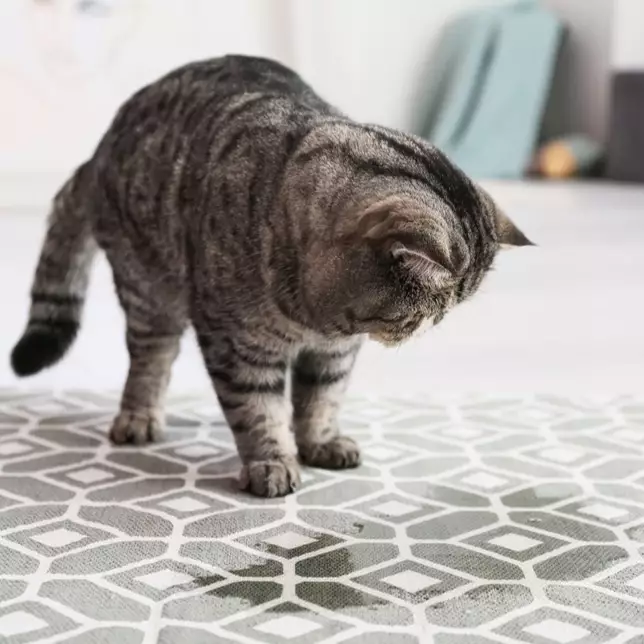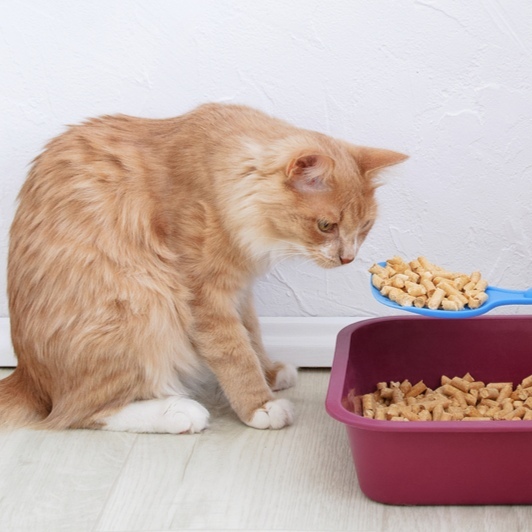Feline Asthma or Feline Allergic Airway Disease (FAAD)
What is feline asthma?
Feline asthma, also known as feline allergic airway disease (FAAD), is a recurring disorder of the lower airway within the lungs which restricts the flow of air. Air enters the body through the windpipe or trachea, also termed the upper airway. The trachea splits into two smaller tubes, called bronchi, which lead into the two lungs. Within the lungs the bronchi divide into many smaller tubes called bronchioles; the bronchi and bronchioles are part of the lower airway. The air moves through the bronchioles into the alveoli, where oxygen and carbon dioxide are transferred to and from the bloodstream.
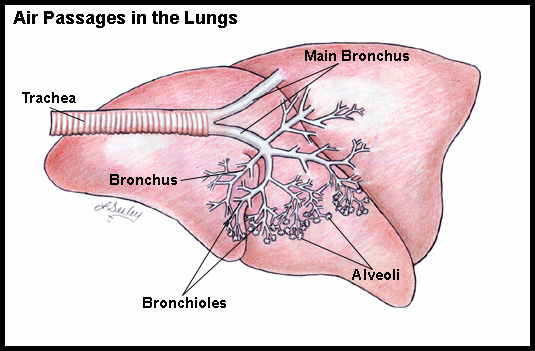
Asthma is essentially the inflammation of the lower airway as a result of allergies. Many substances in the environment can irritate and inflame the lower airways.
In response to these allergens, the following may occur:
- The cells lining the walls of the lower airway change
- Other cells in the lower airway produce excessive mucus
- The muscle in the lower airway constrict and spasm
The consequence of these changes is that the airways become swollen and inflamed, leading to constriction and difficulty breathing. This reaction is often episodic, and between episodes, the cat may appear to be perfectly healthy.
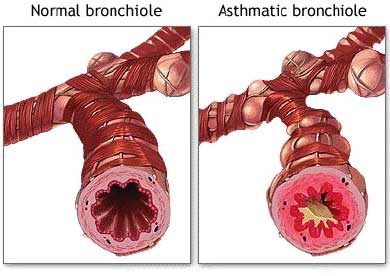
Symptoms of feline asthma
Symptoms of feline asthma are similar to those seen in humans with asthma, and may include:
- Laboured breathing
- Open-mouthed breathing
- Fast breathing
- Wheezing (most audible after exercise)
- Coughing
- Blue tinge to the gums
- Poor appetite
- Weakness
- Lethargy
- Exercise intolerance
A full-blown asthma attack may resemble a cat trying to cough up a hairball or choking on food. In the case of asthma as opposed to “just a hairball”, the cat’s body posture is different. With asthma, the cat’s body will be hunched lower to the ground and her neck and head will be extended out and down to clear the airway of mucous. The “gagging” may also be accompanied by a typical coughing sound and possibly sneezing.
Causes of feline asthma
While it is often difficult to identify the particular cause each situation, allergens are the most likely triggers for feline asthma. Common allergens implicated in feline asthma may include:
- Dust
- Pollens
- Smoke
- Cold, moist air
- Mold
- Household chemicals
- Cat litter
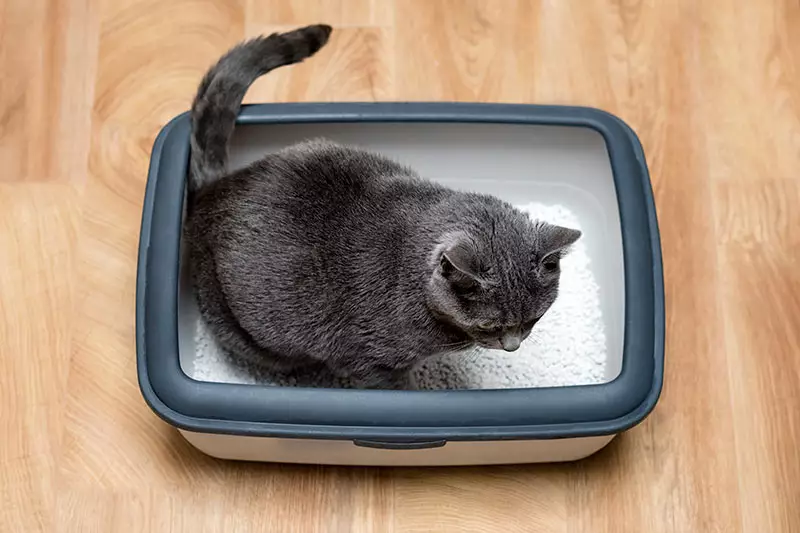
How is feline asthma diagnosed?
Diagnosis requires a detailed history of the cat’s overall health and symptoms, as well as a complete physical examination. There are no definitive diagnostic tests for asthma in cats, and several other disorders can produce similar clinical signs, including:
- Heartworm Associated Respiratory Disease
- Bacterial infection of the lungs and / or lower airway
- Lungworm
- Tumours in the lungs
- Congestive heart failure
- Lung haemorrhage
Therefore, asthma in cats is generally a diagnosis of exclusion. The vet will need to screen for these other disorders with diagnostic tests, for example, blood, faecal and urine tests to detect infection and specific tests for heartworms.
Other diagnostic tests that may be helpful in diagnosing asthma in cats include:
Chest x-rays:
- Can reveal changes in the lower airways possibly caused by the thickening of the walls of airways.
- May detect a lung lobe collapse, which can occur if the lobe has not received sufficient air or if there is an excessive accumulation of mucus.
- May reveal an over-inflated lung lobe, which can occur if the cat has difficulty exhaling normally.
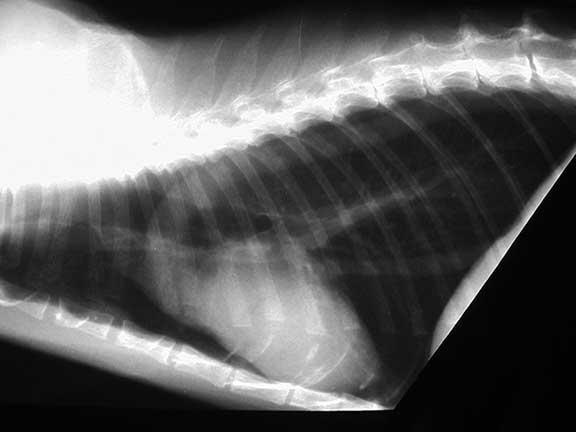
Source: https://www.lbah.com/canine/asthma/
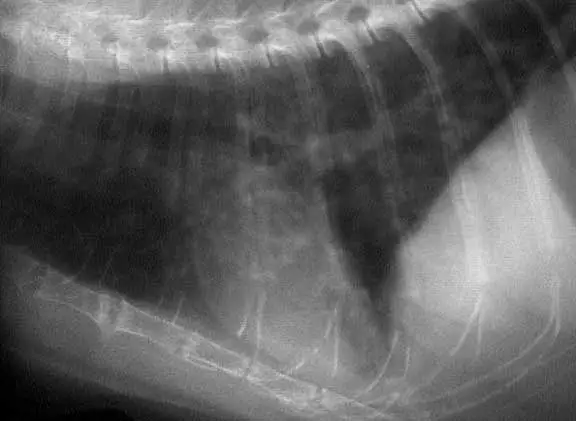
Source: https://www.lbah.com/canine/asthma/
Bronchoalveolar lavage (BAL):
- An endotracheal tube is inserted into the trachea under general anaesthesia.
- Cell and fluid samples from deep in the airways are removed for examination.
- BAL can also identify any other conditions that may be present in the lungs.
- BAL is not recommended if a cat has severe respiratory stress.
Bronchodilator:
- A medication which dilates the lower airways, resulting in rapid improvement of respiration.
- Where the diagnosis remains uncertain, the cat’s response to a bronchodilator may be used as a form of diagnosis.
- A failure to produce a rapid positive improvement may lead to a reevaluation of a diagnosis of asthma.
Prognosis
An asthma attack can be very serious. The severity of an attack may range from mild to severe and even life-threatening. It is essential to seek emergency care as soon as possible if the cat appears to be having an asthma attack. With prompt and appropriate medical intervention, the airway constriction can be reversed so that the cat can breathe freely again.
Treatment for feline asthma
It is important to treat asthma aggressively in order to minimise long-term airway damage. If the cat is having a severe asthma attack, she will probably need to be hospitalised and given oxygen until she is breathing easier and her condition stabilises. In emergencies, medications may be given by injection to relieve acute respiratory distress.
As there is no cure for feline asthma, reducing and/or controlling the inflammation in the airways is the goal of treatment. Generally, treatment and ongoing management of asthma in cats require a combination of medications and environmental modification.
Medical treatment
Medications to open the breathing passages and / or reduce inflammation may administered. Corticosteroids are the most commonly used drugs for this purpose.
Sometimes medications are administered through an inhaler (just like humans), although some cat owners find this challenging. More recently, form-fitting metered-dose inhalers specifically designed to fit a cat’s muzzle have become available.
Medical treatment may include:
- Bronchodilators
- Relieve the constriction of the lower airways that is classic in this disease.
- They may be administered either as an injection or via an inhaler.
- Corticosteroids
- Help by reducing inflammation
- May be given by mouth, injection, or via inhaler
- The use of inhalers in cats is well-tolerated, and studies have repeatedly shown inhalation of medications is an effective route for delivering sufficient doses to be clinically effective.
- Cough suppressants
- These may be helpful in some cases, such as cats suffering from prolonged or exhausting coughs
- Cough suppressants need to be used cautiously, as coughing is a normal mechanism for clearing airway secretions.
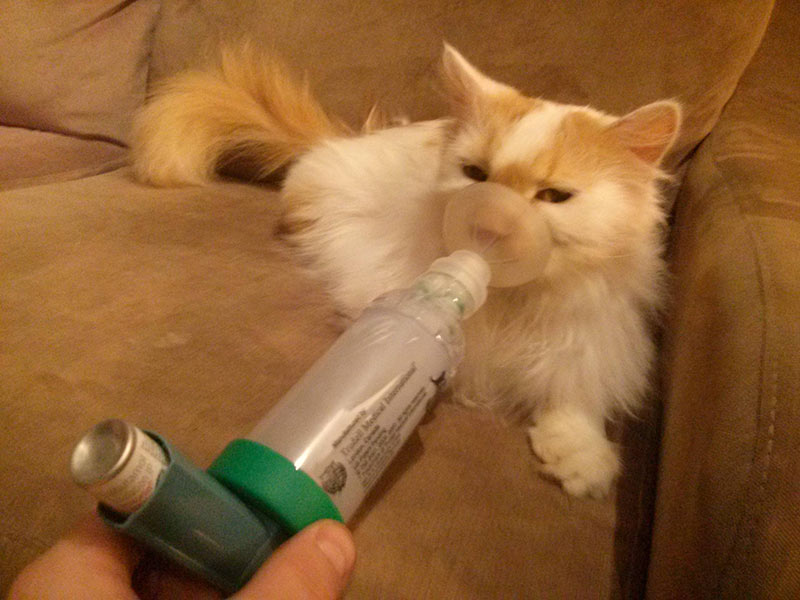
Environmental modification
While asthma in cats is difficult to prevent, environmental cleanliness can help in many instances. Preventative measures are similar to those taken for human asthma sufferers:
- Dust should be eliminated as much as possible by using dust-free litters, and by regularly dusting and vacuuming the house.
- Use unscented cleaners, and avoid strong perfumes/colognes, incense, insecticides, other sprays and aromatic oils.
- Air purifiers / air filtration systems may be beneficial.
- Change air conditioning filters regularly.
- Obese cats should be put on a calorie restricted diet.
- A high-quality diet needs to be provided, whether your cat is obese or not.
- Reduce stress as much as possible.
- Do not expose the cat to cigarette smoke.
In summary
Asthma in cats is characterised by constriction of the lower airway that prevents adequate airflow; essentially it is inflammation of the lungs caused by allergens. Affected cats often experience breathing difficulties, coughing and wheezing during an attack, but may appear perfectly normal between episodes.
As there is no definitive diagnostic test for asthma in cats, a thorough diagnostic investigation is essential. A severe asthma attack in a cat can be life threatening if not treated properly or promptly. Medical treatment with bronchodilators and corticosteroids is often effective in reducing the frequency and severity of attacks. Environmental management in order to reduce exposure to dust and other potential allergens is an important element of ongoing treatment.
Bow Wow Meow Pet Insurance can help protect you and your cat should an unexpected trip to the vet occur.
-
Find out more about our cat insurance options
-
Get an online pet insurance quote
Bow Wow Meow is proud to have been awarded winner of Canstar’s ‘Most Satisfied Customers’ Award in the Pet Insurance category for both 2024 and 2025!
Bow Wow Meow is proud to have been chosen as Product Review’s Pet Insurance Award Winner every year from 2018 to 2025! This is based on 2,995 independent customer reviews (as at 21/01/2025), with an overall rating of 4.3*
Google Review rating = 4.5* (based on 968 reviews)
Trust Pilot rating = 4.6* (based on 531 reviews)
Bow Wow Meow is proud to have been chosen as Product Review’s Pet Insurance Award Winner every year from 2018 to 2025! This is based on 2,995 independent customer reviews (as at 21/01/2025), with an overall rating of 4.3*
Google Review rating = 4.5* (based on 968 reviews)
Trust Pilot rating = 4.6* (based on 531 reviews)
Bow Wow Meow has been chosen as a winner in the Finder Pet Insurance Awards 2024. Finder’s panel of experts analysed over 140 quotes to award our Ultimate Care Plan the winner of the “Pet Insurance – Value” category.




